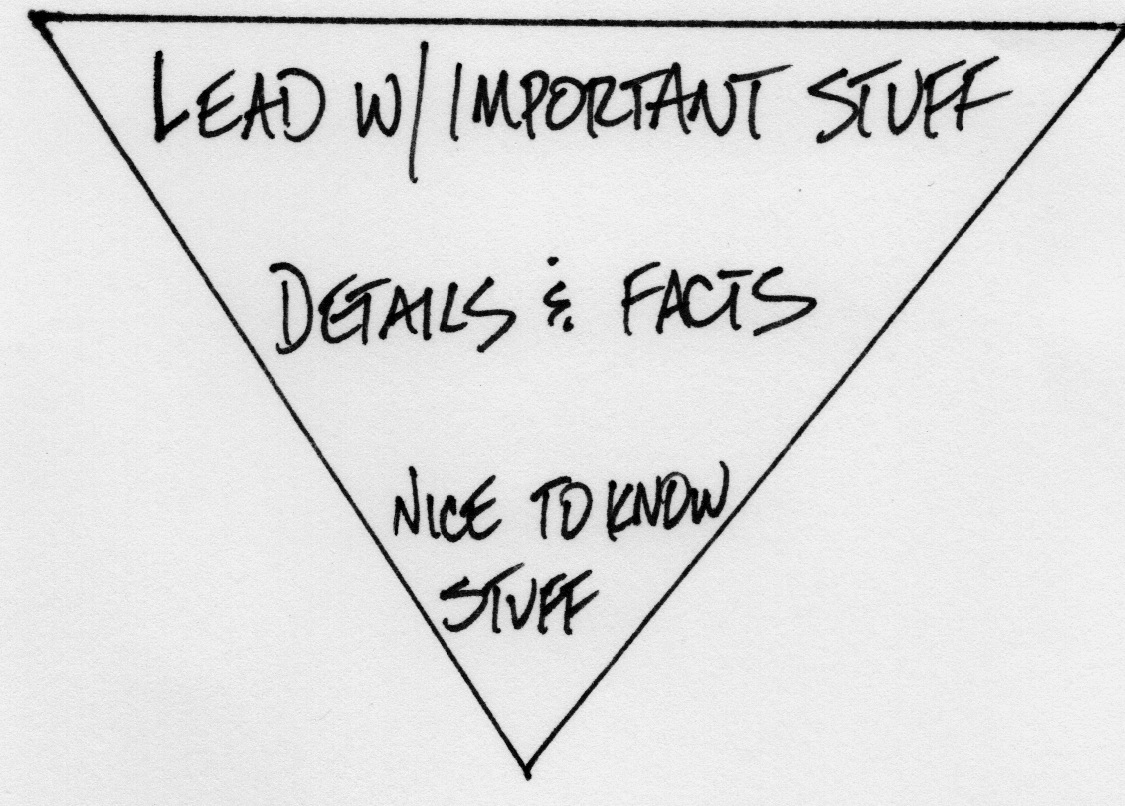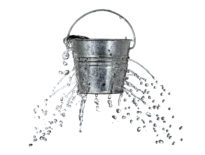What’s the best fundraising metric to share with your board? How about with your executive director? What about with your colleagues in development?
In a world teeming with data it can be hard to refine, simplify and organize your metrics into concise and poignant reports. What makes this even more difficult is factoring in all of the different audiences you may end up sharing your findings with. Different “audiences” have different needs and wants, how can you cater to that?
In this blog post we’ll explore best practices for sharing fundraising metrics with the board, your executive director or direct report, and with your fellow development staff. As we go through this article, please keep one thought in mind – we’re building an inverted pyramid of sorts.
It may seem counterintuitive at first, but think of the metrics and reports we’re going to discuss as layers that build on top of one another. The largest layer (lead with the important stuff) will be for the board. This will be the top of the pyramid. The next layer will be for your executive director or direct report. And finally, when we discuss the most granular fundraising metrics, that will be for your development colleagues, the bottom of our inverted pyramid.
Each layer will build on the previous layer. Your board will be exposed to only the most important fundraising data, while your development colleagues will receive more granular metrics and reports.
Let’s start building that largest layer, shall we?
Sharing fundraising metrics with the board
How much time will you have during your next board meeting to share an update on fundraising initiatives? I’ve heard from Development Directors who have as little as 15 minutes to share their reports. How can you possibly be expected to tell a compelling and comprehensive story with that little time?
The answer is fundraising KPIs. Those are your secret weapon. When it comes to sharing metrics with your board, you should skip the metrics (counterintuitive, I know) and head straight to the KPIs.
What are KPIs? Key performance indicators target critical areas of performance. Critical being the important word here. KPIs align with key organizational objectives.
For example, a key performance indicator may be total donation revenues. Total revenues aligns with the organizational goal to build more financial capacity. More financial capacity will better enable program development and expansion.
Fundraising is the financial engine that powers your organization’s program initiatives. When it comes to sharing KPIs with board members it is best to focus on the KPIs (like total donation revenues) that most closely align with overall organizational goals. Depending on your funding structure, here are five good KPIs to be prepared to share:
1. Cost Per Dollar Raised (CPDR)
CPDR is a tricky KPI to measure and calculate, but your board will love it. Why? Because no matter what background a board member has (finance, public service, etc.), they’ll understand the implications (from a high-level) of CPDR almost instantly.

If you can take your CPDR KPI and format it into a visualization (similar to what you see above) then you will be all set. Visualizations help anyone (board member, development staff… literally anyone) find trends more quickly than looking at a spreadsheet. And for you, that’s a win. You want to convey pertinent information quickly and effectively.
2.Donor & Donation Growth (Year-Over-Year or Quarter-Over-Quarter)
Donor & Donation growth are a pair of fundraising KPIs that we seem to always discuss, and with good reason. These two metrics are by far the most important high-level fundraising KPIs of all.
Learn more about donor & donation growth here.
3.Average Gift Size
Yet another fundraising KPI all-star, average gift size (although not as important as donor lifetime value) is one of the best KPis to share with the board. However,average gift size is easier to explain and comprehend than LTV and in this context that is a good thing.
More on average gift size here.
4.Donor Retention Rate
Donor retention rate is a staple of board meetings across the world. I’ve said it many times, but it bares repeating: Donor retention rate is a measure of how well you are handling donor relationships, and this is something we can all get better at. Share this KPI with your board so that they are aware of the progress you are making in this area of your fundraising.
More on retention rates here.
5.Donation Frequency
Donors may be retained, but how frequently are they giving? With a recent push towards monthly giving programs and cultivating recurring donors it might be worthwhile to include this KPI at your next board meeting as well.
More on donation frequency here.
Sharing fundraising metrics with the ED/direct report
If those fundraising KPIs are our foundation, then the next level on our pyramid will be slightly more refined fundraising metrics.
In reporting data to the board, we are solely focused on fundraising KPIs that quickly and conveniently highlight high-level trends in donor behavior. But when it comes to sharing data with your direct report, we will be more interested in some more refined analysis and metrics.
Where KPIs focus on showcasing how development is playing a role in key organizational initiatives, fundraising metrics (like the ones we are about to dive into) are more concerned with departmental performance and achieving goals.
With that in mind, here are four fundraising metrics that direct reports tend to get a lot out of, regardless of funding structure:
1.Lapsed Donors
It’s great to look at high-level KPIs like donation revenue and see that increasing year-over-year. But one of the underlying components of donation growth is actually donor attrition. Things might look rosey when you focus on the top-line metric, but what is happening behind the scenes? Preparing a visualization of quarterly or monthly lapsed donors is a great way to keep your direct report informed on how well retention efforts are going.
More on lapsed donor reports here.
2.Reactivated Donors
On the other side of the spectrum are reactivated donors. Donors who had previously lapsed, but decided to come back to your organization. A reactivation report can help validate that investing in donor recapture is worthwhile. Keep tabs of who is reactivated and what their level of contribution is.
More on reactivated donor reports here.
3.Upgraded Donors
Retained donor reports are great to look at, but even better are upgraded donor reports. Comparing upgraded donor reports with downgraded donor reports will allow for your executive director or direct report to quickly see trends in donor behavior.
More on upgraded donor reports here.
4.Downgraded Donors
To round out our fundraising metrics for ED’s and direct reports we have the downgraded donor report. As mentioned above, downgraded donor reports, when paired with upgrade reports, are compelling and interesting. But downgraded donor reports are also useful on their own. Who are the downgraded donors? Why did the downgrade? These are questions your direct report will have, and you can come prepared beforehand with the answer.
More on downgrade donor reports here.
Sharing fundraising metrics with development staff
At the bottom of our inverted pyramid we have our most granular fundraising metrics. These are the metrics that will help measure campaign effectiveness, determine which segments of donors have the best return on investment and keep track of specific trends in donor behavior.
Instead of getting into the weeds on specific metrics here, I’ll link to our recently finished Data Driven Fundraiser Guide. There are myriad fundraising metrics that can insightful and powerful when working with your development team, and rather than discussing 3 or 4 that are the “best,” I’d rather link you to our recent guide which can help align your thinking.
Applying this at your shop
As you can see, the metrics and data you will share varies greatly depending on who your audience is. When you have 15 minutes to create a compelling report for the board you’ll use high-level key performance indicators. When you are sharing with your executive director or direct report you’ll focus on some of the underlying mechanics that affect those high-level KPIs. Finally, when you are working with your development team, you’ll turn your attention to specific campaign and donor segment performance.
There’s no magic bullet when it comes to sharing data though. You need to know your audience, understand their needs and wants and cater to them. Hopefully these suggestions will be a good place to start next time you find yourself unsure of what to share.






Excellent, just shared it on LinkedIn.
Thanks so much, Patricia!